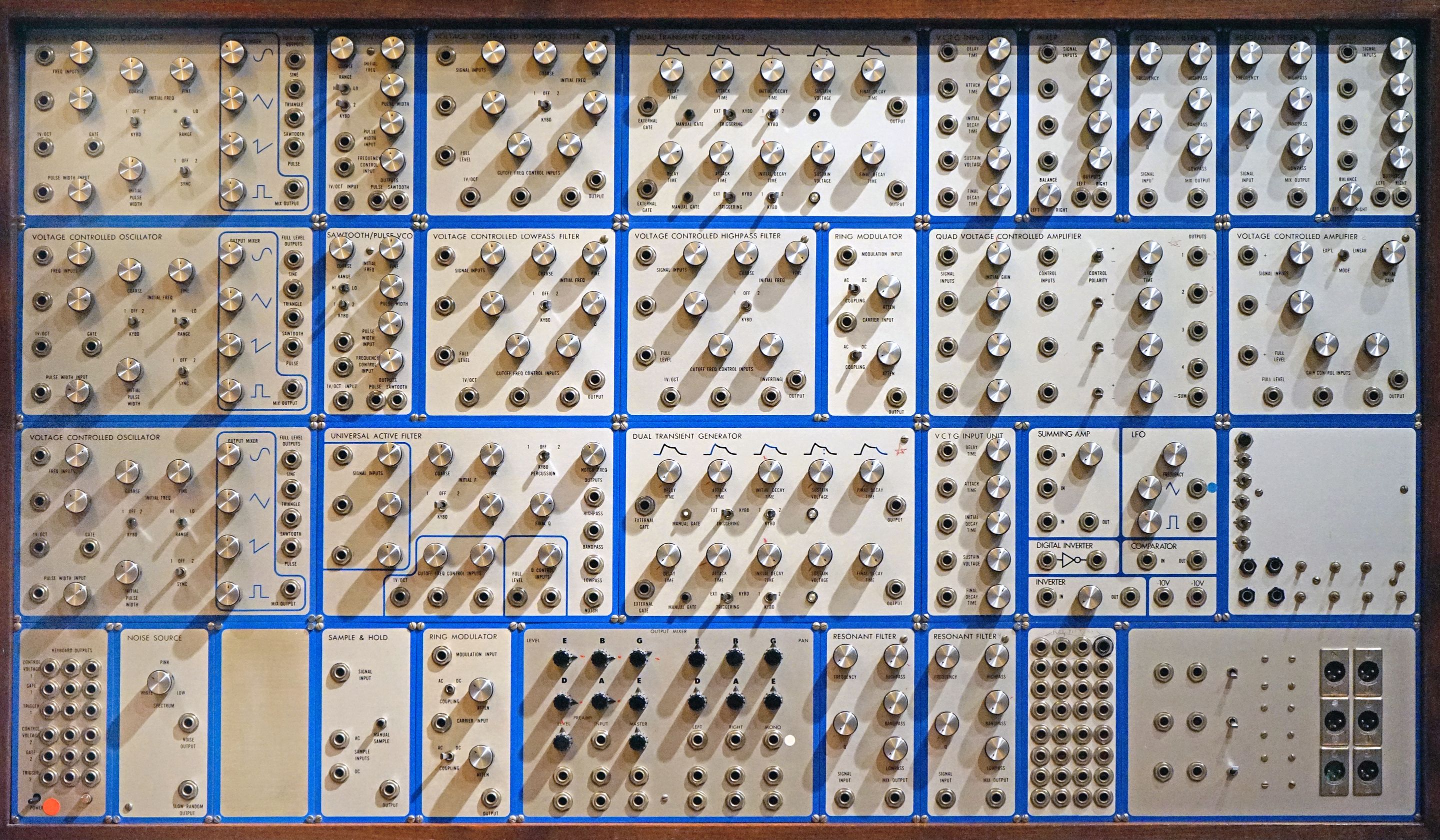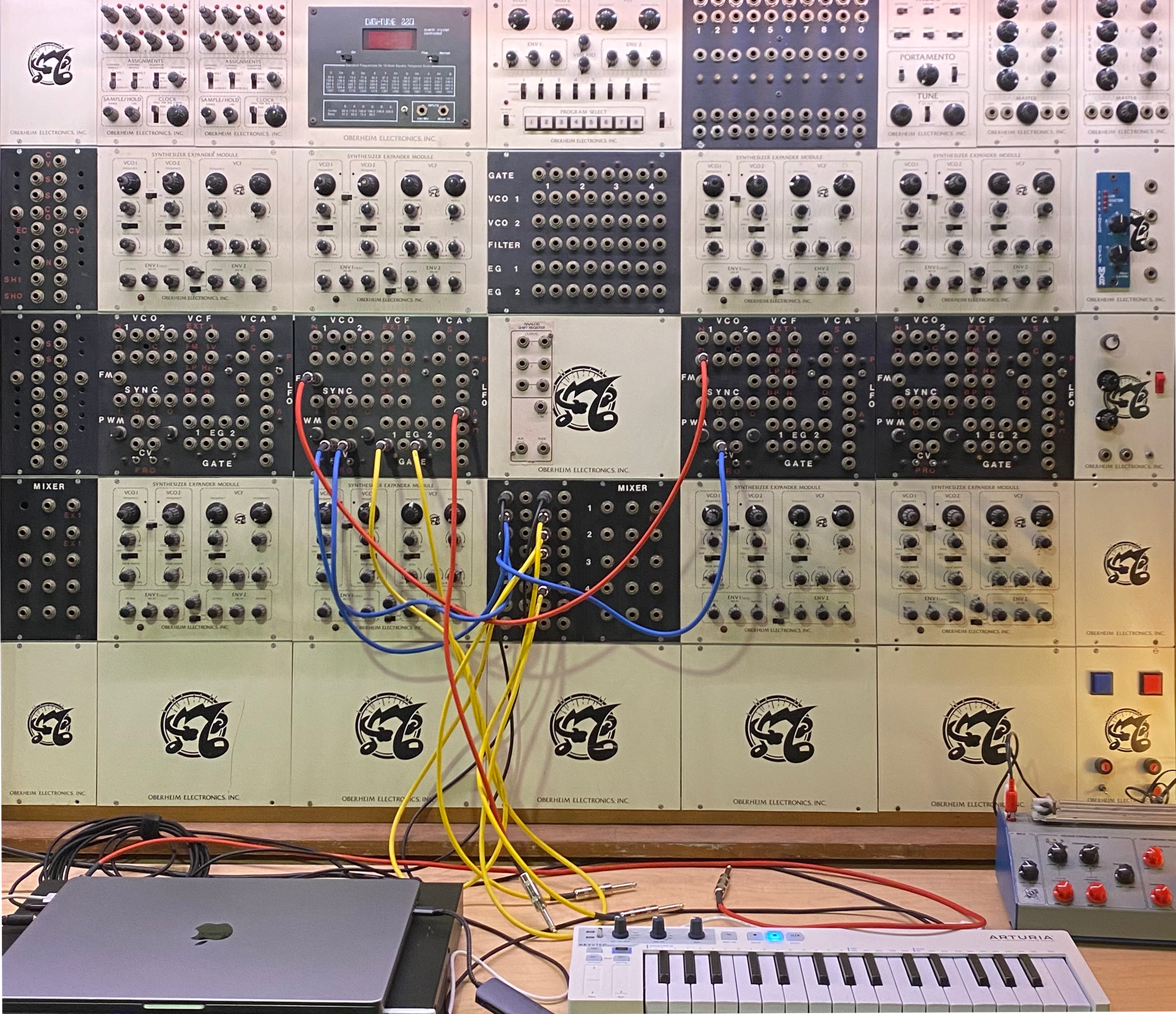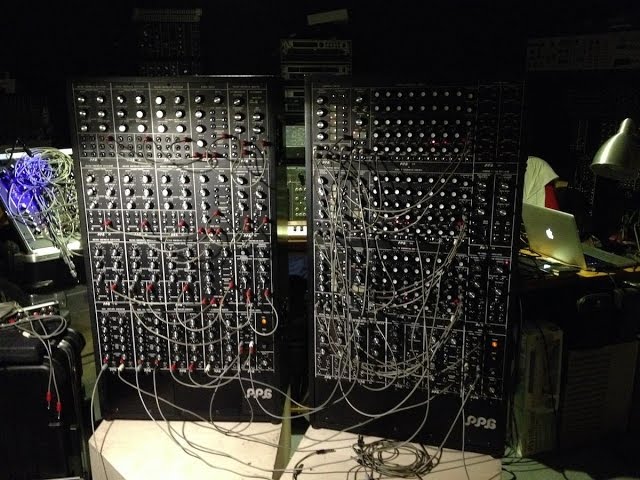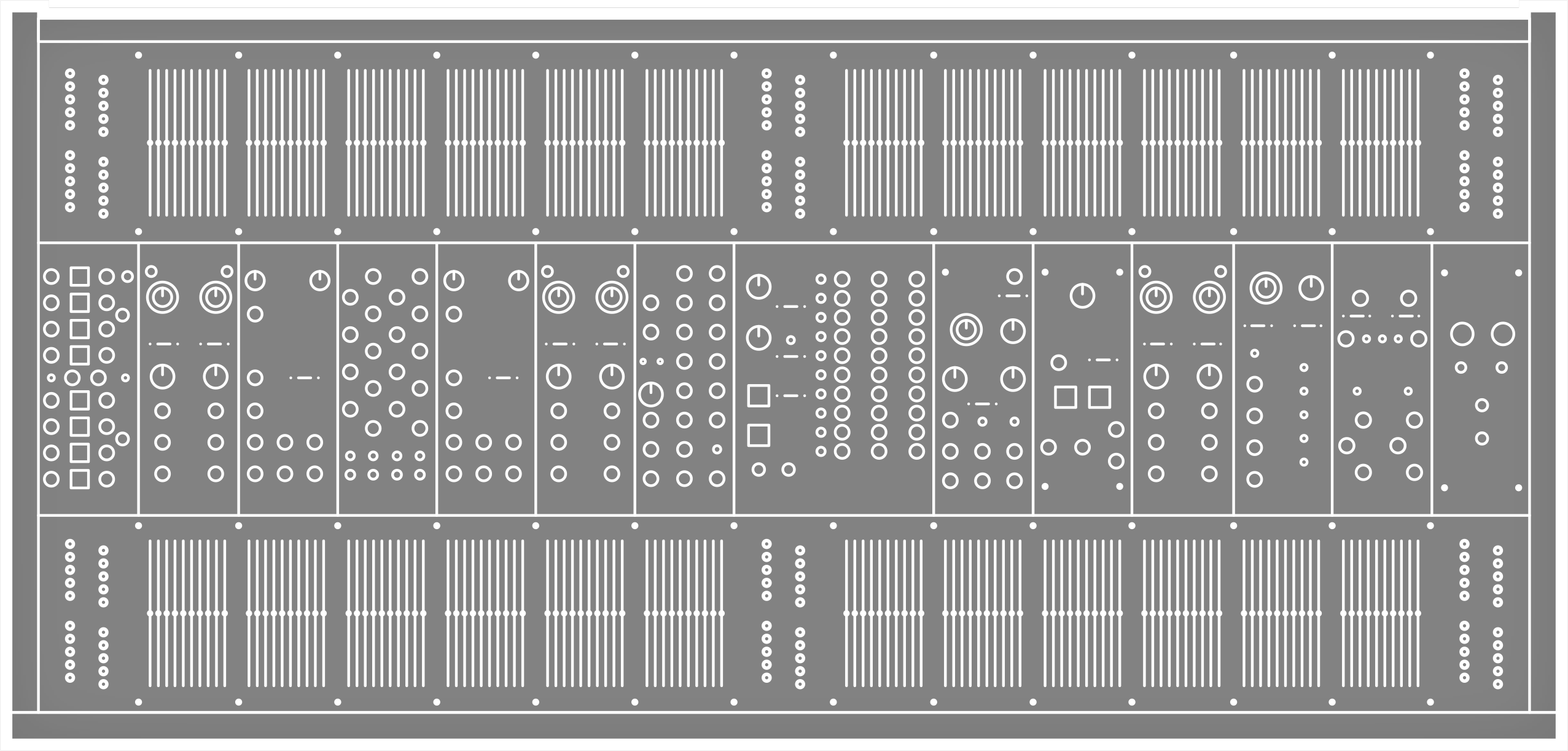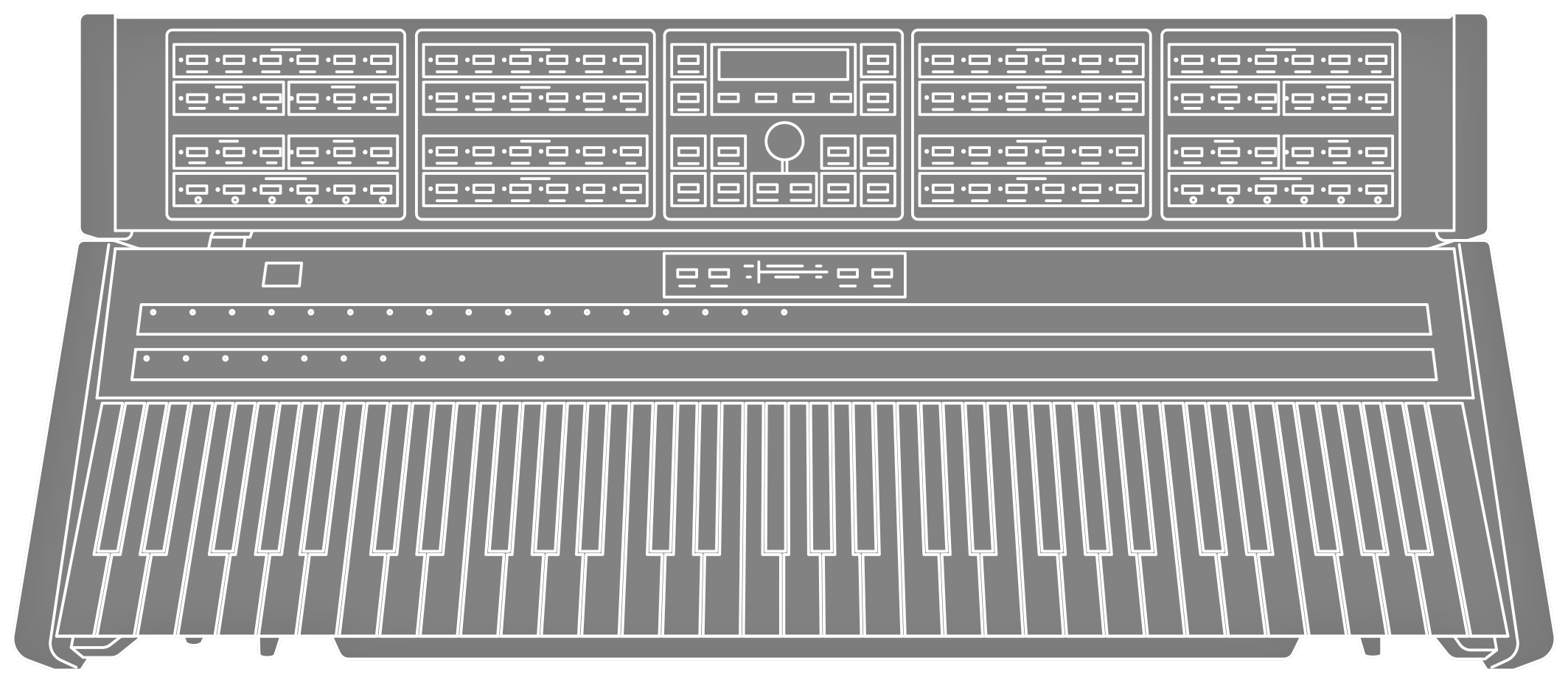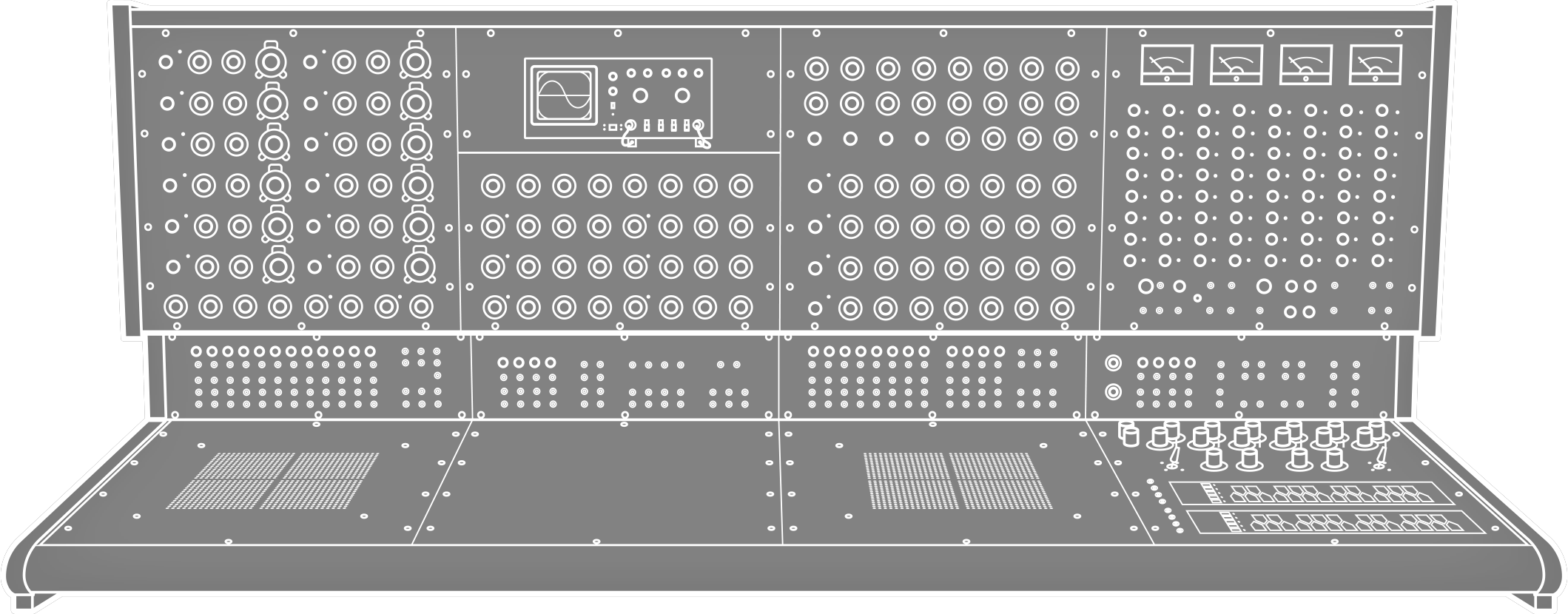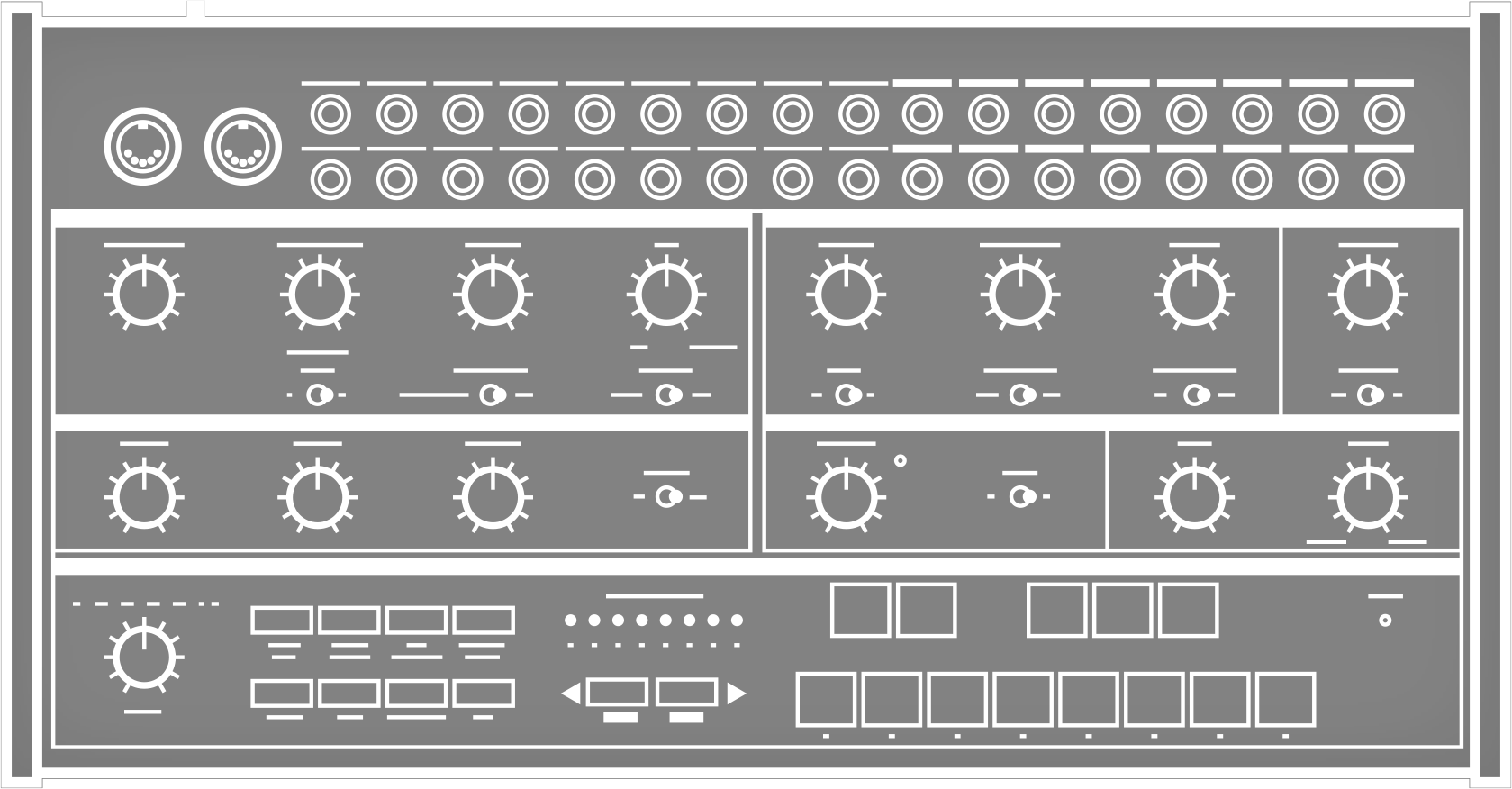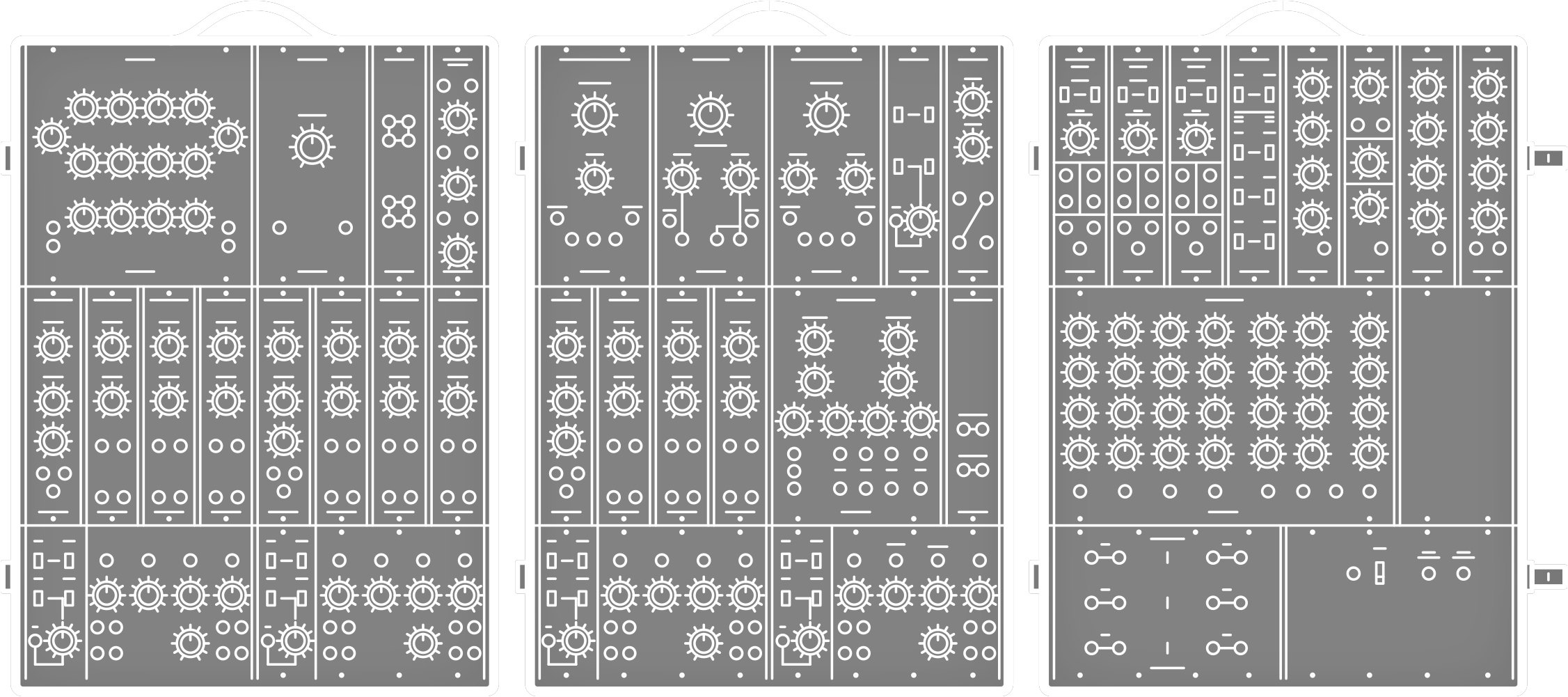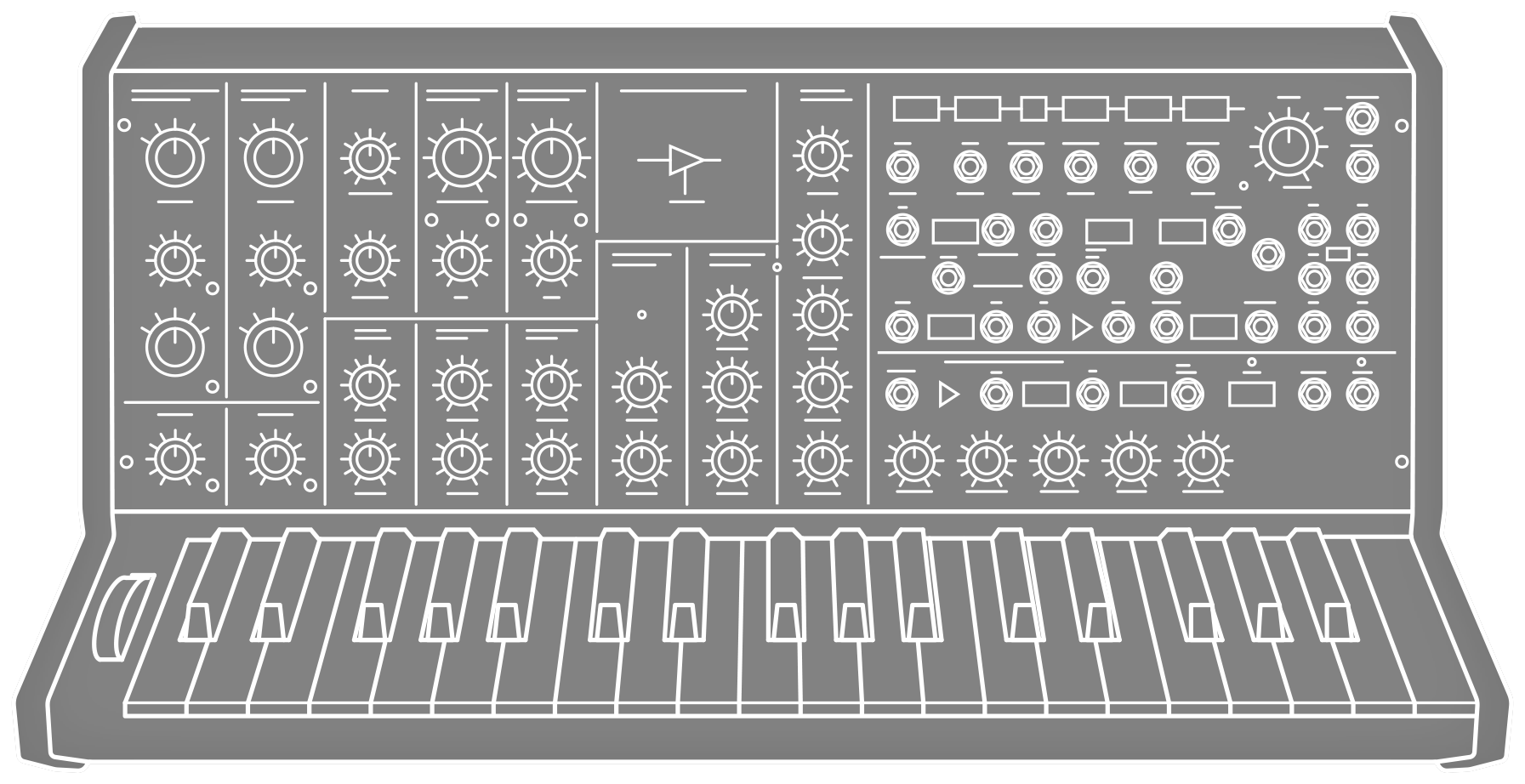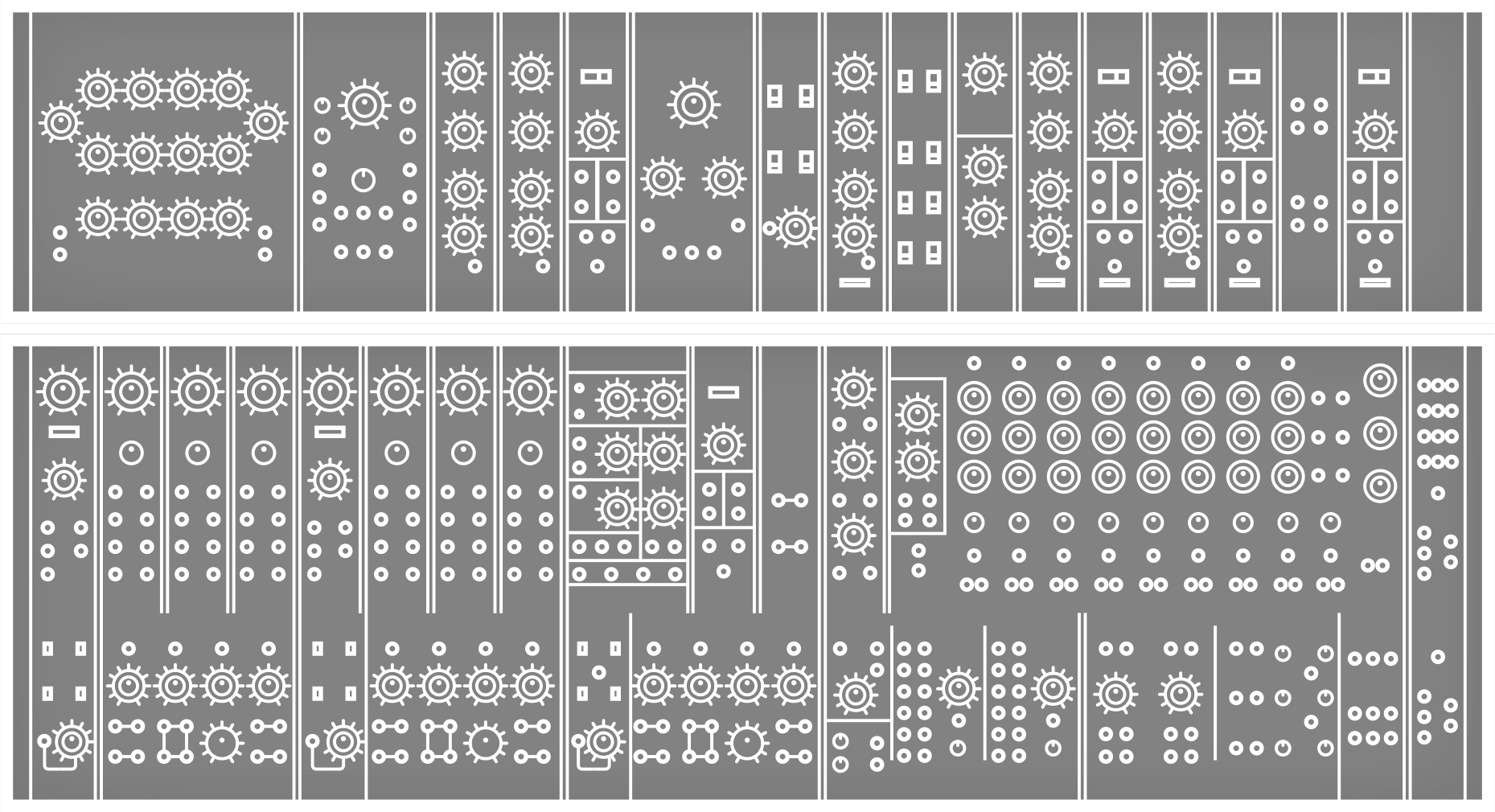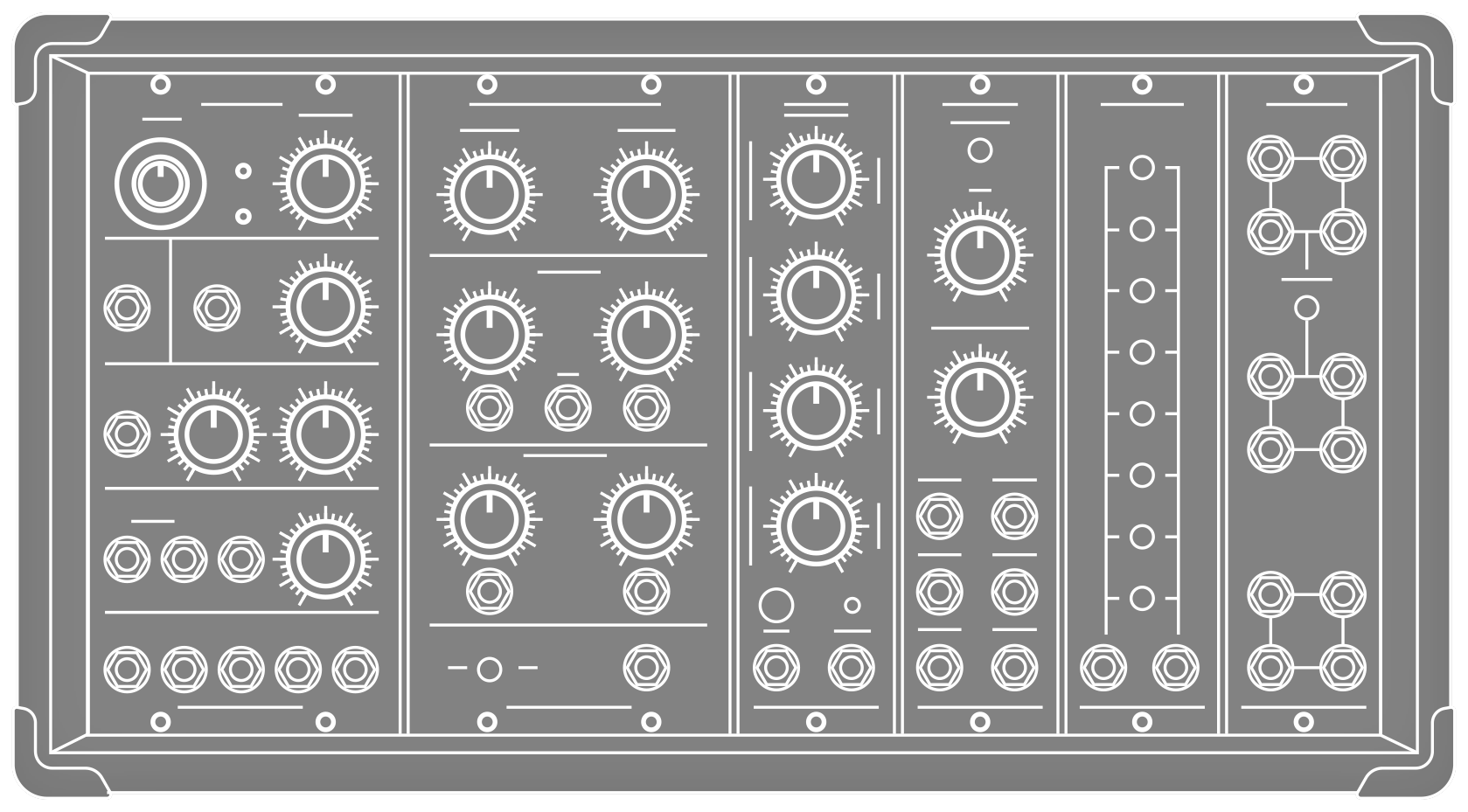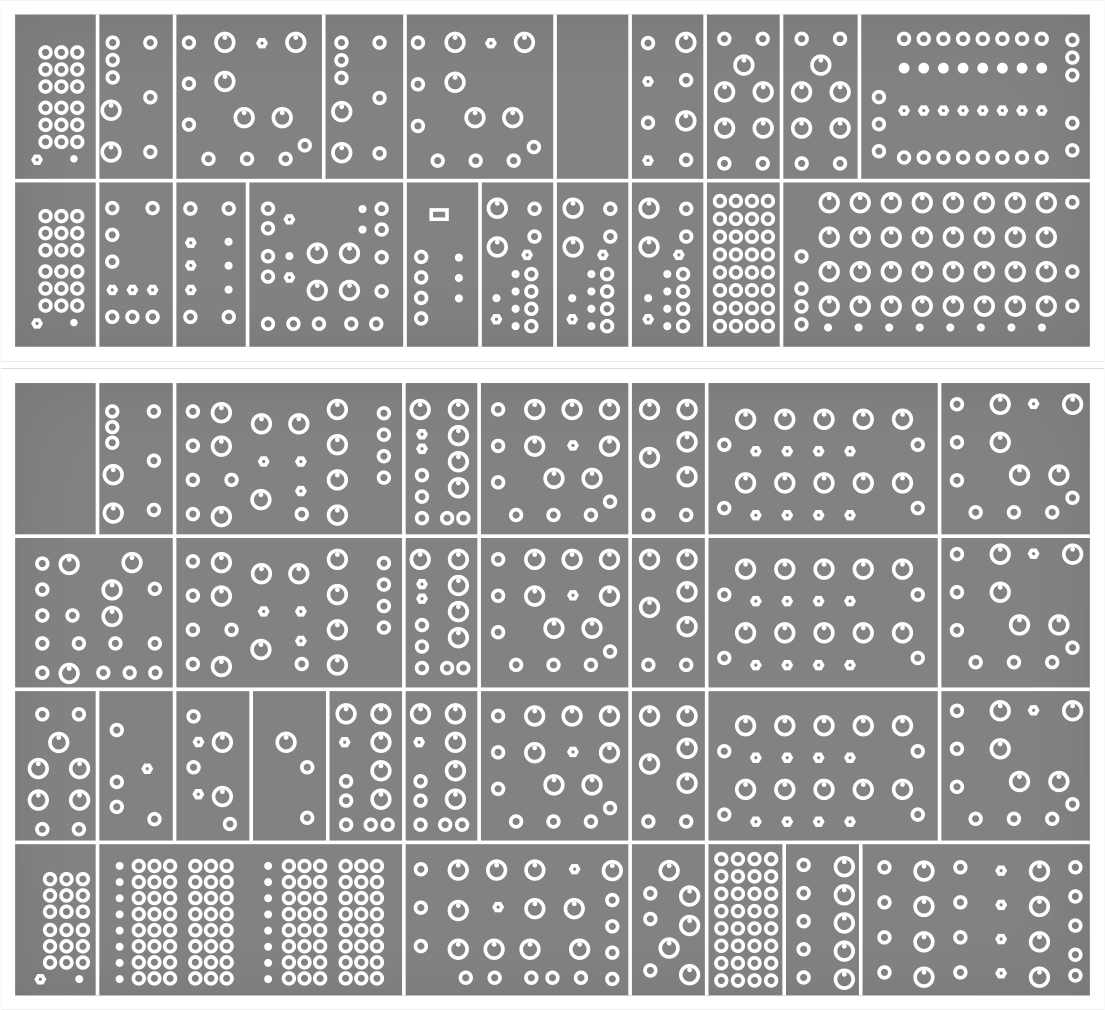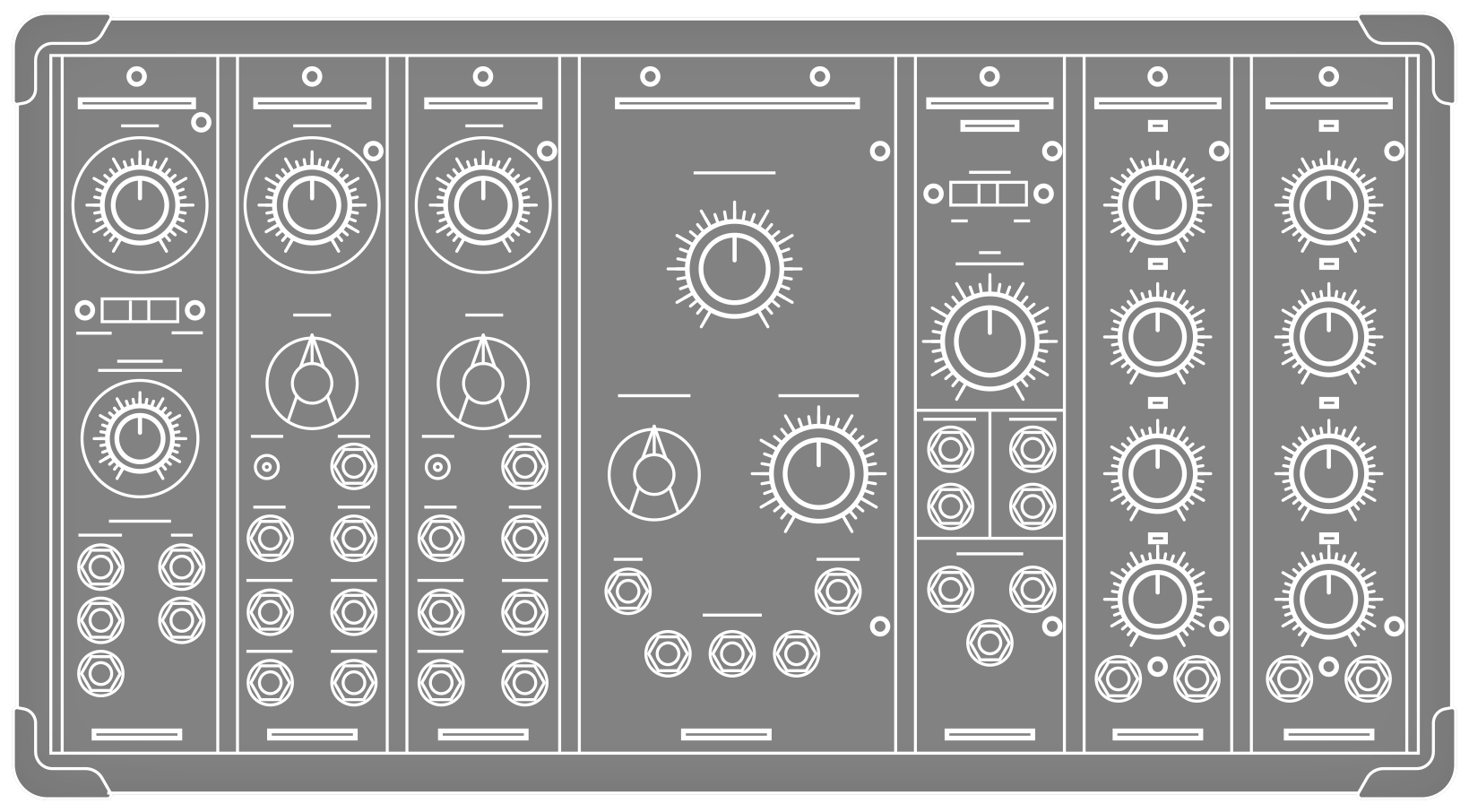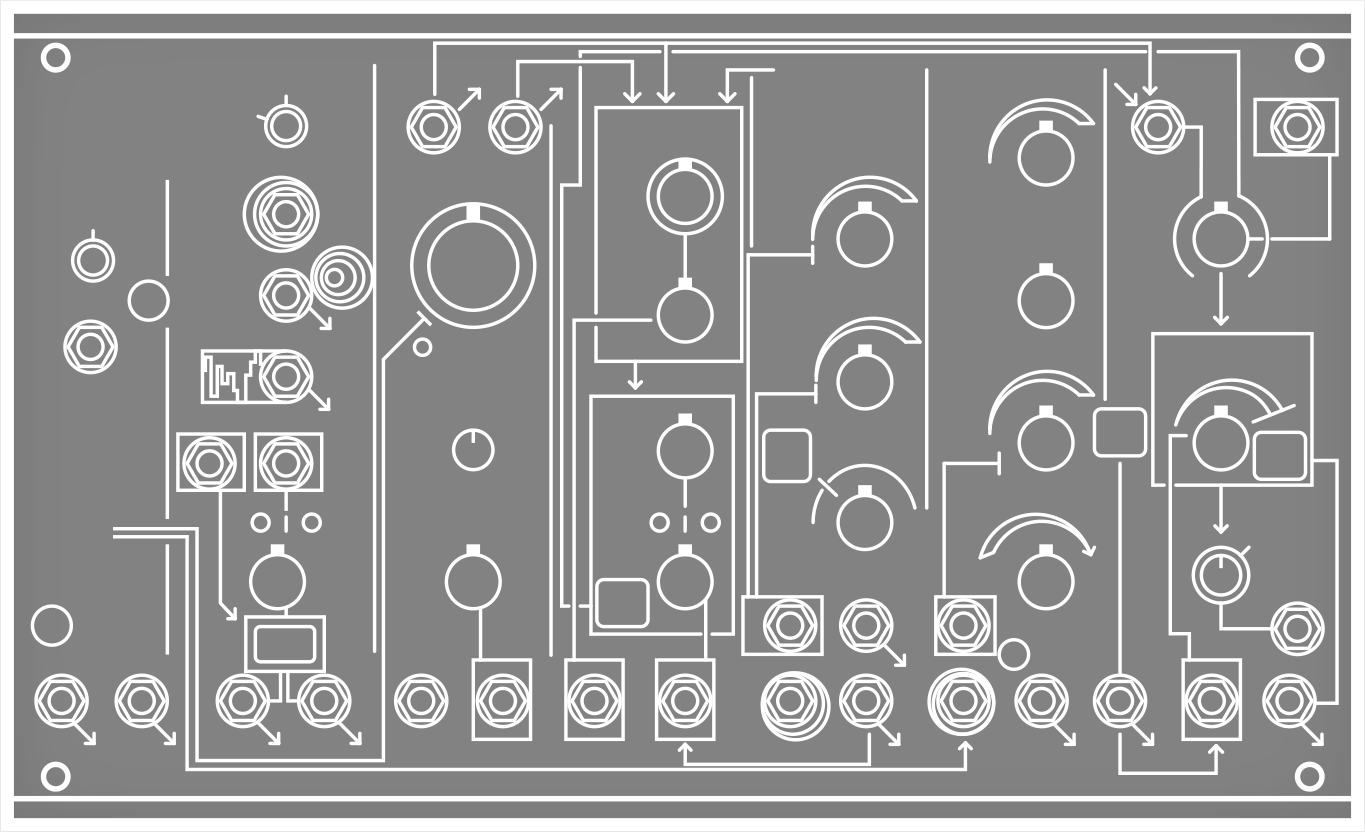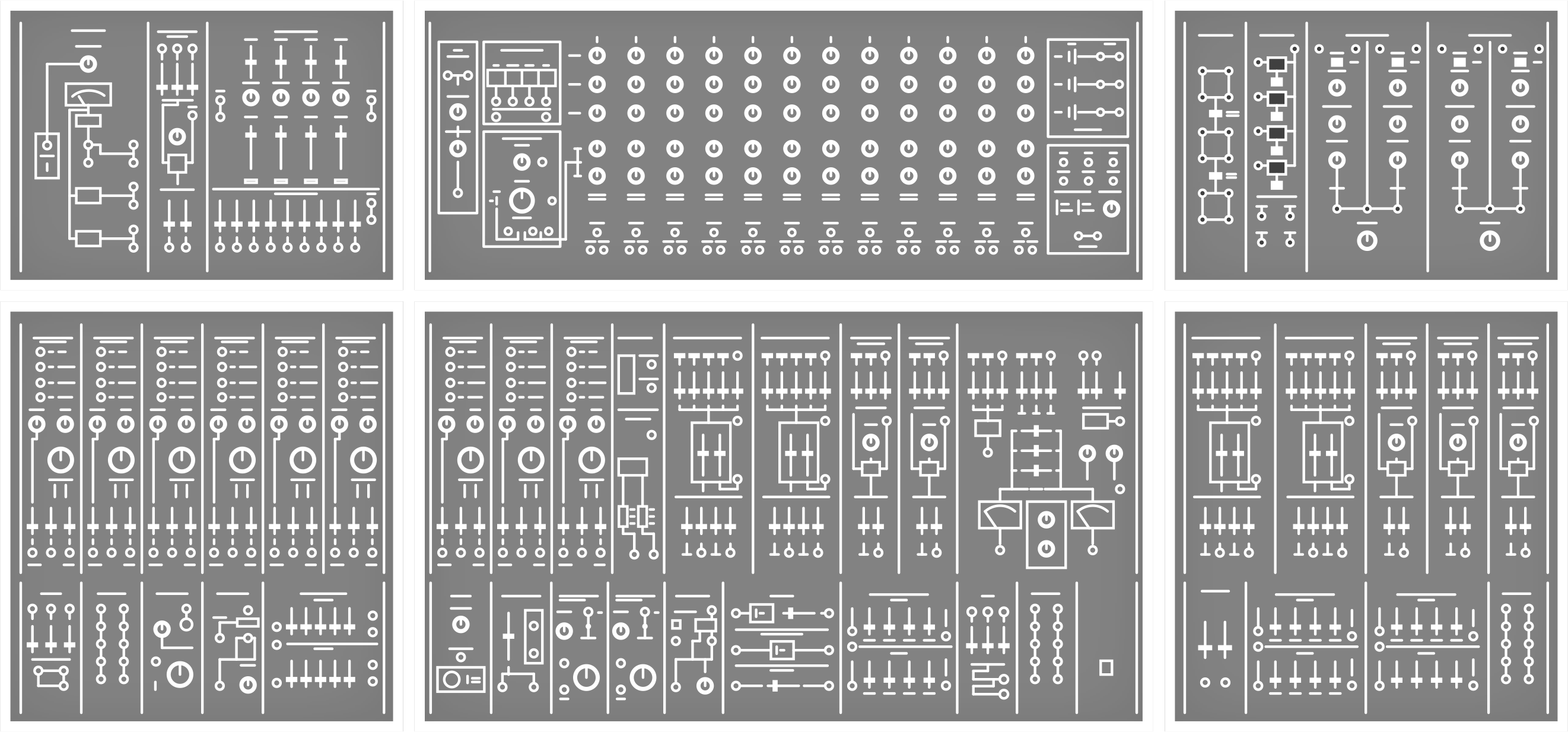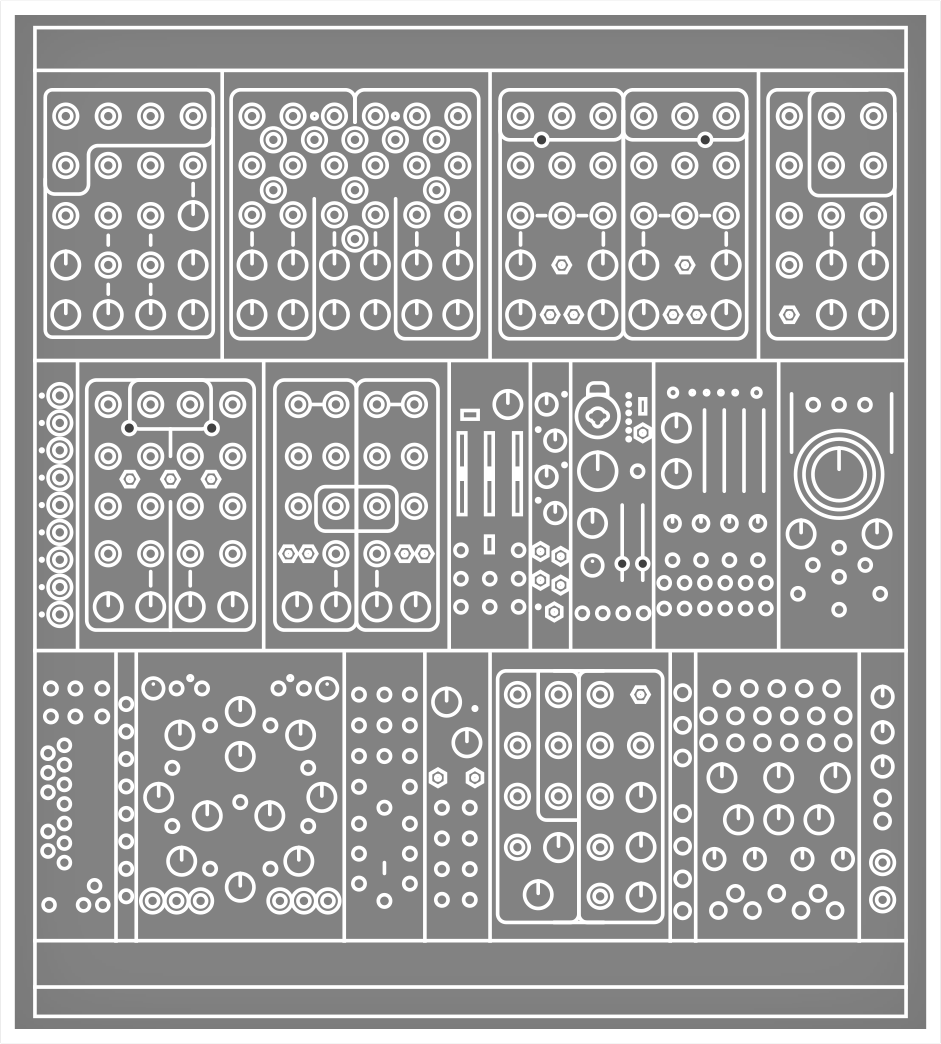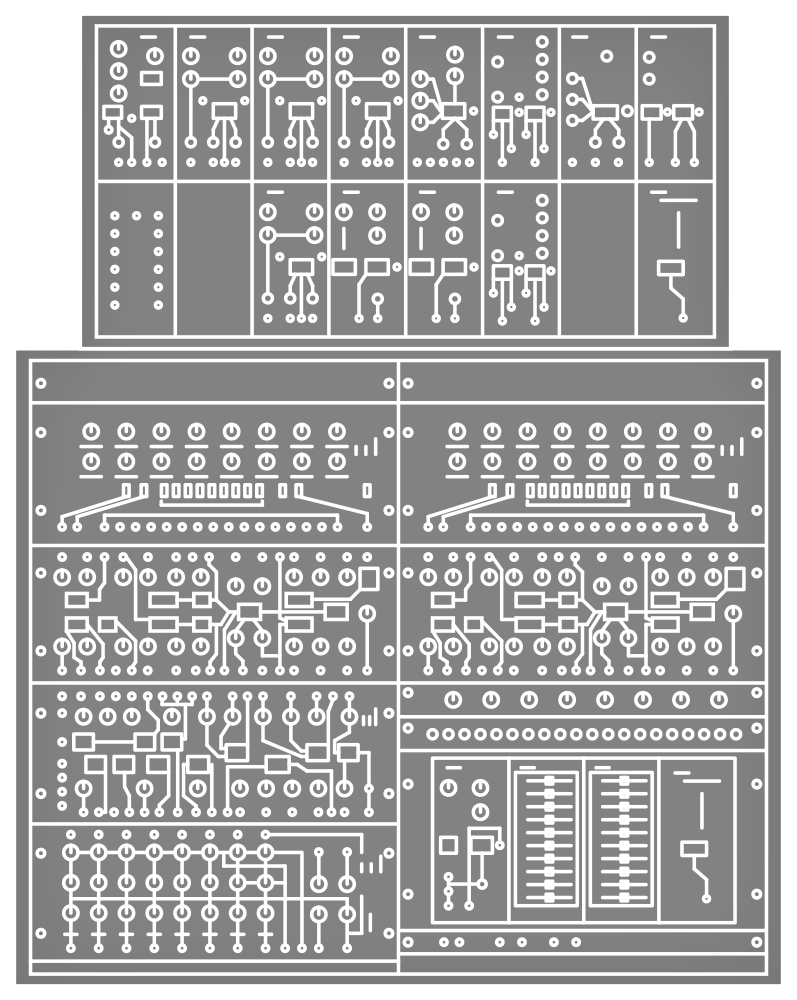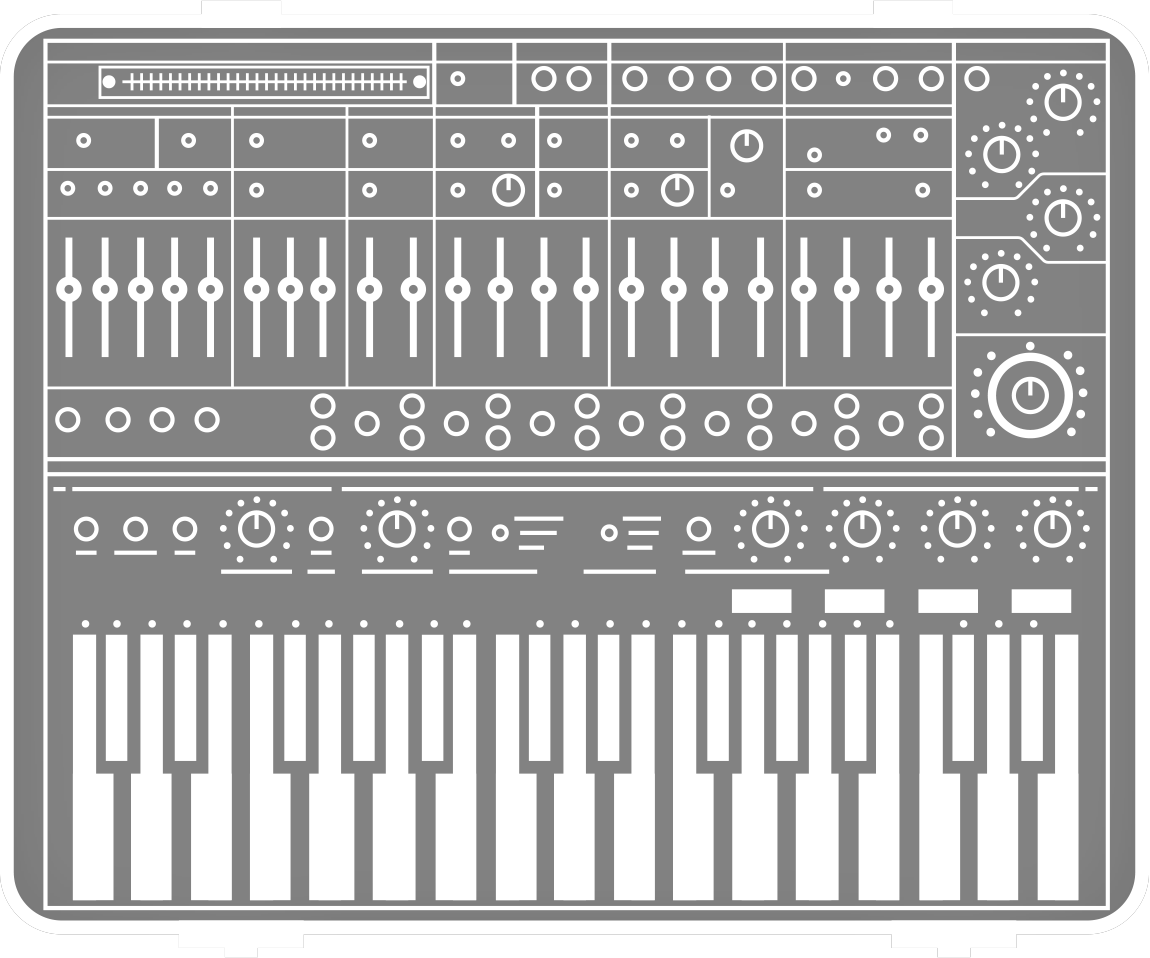Exploring the legends behind Quadra Modular
Modular synthesis stands as a cornerstone of electronic music innovation, revolutionizing sound creation with its modular approach to signal processing and synthesis architecture. The recent release of Quadra Modular embraces this rich heritage of modular synthesis, delivering the authentic raw sound of 30 iconic modular systems. The recording of these machines took our teams from the south of France, in one of France's largest synthesizer museums, to Rosen Sound in Los Angeles. In this new UVI Focus article, discover the story behind 6 of the rarest modular systems included in Quadra Modular.
Colossus
Designed by Tom Carpenter, the naming convention of the Colossus is truly representative of ‘what you see is what you get’. In this case, we were able to get our hands on one of the ONLY Colossus Double synths in the entire world. The Colossus classic version has 12 wave-variable oscillators to work with, eight filters, two spring reverbs, a single oscilloscope, twin pin matrixes, and four envelope generators. For the double version, you can multiply those specs by 2, and imagine some truly phenomenal sound design possibilities. As you can imagine, both the sound (and the footprint in your studio) is truly massive.
When describing the physical requirements for setup, Analogue Solutions recommends that 2 people be available to lift it with yet a third person for ‘moral support’. Pete Townshend and Hans Zimmer round out the well known user base of this offering from Analogue Solutions.
E-MU Modular
While E-mu is known for having a big hand in shaping digital synthesis and sampling, they produced a modular synth in the beginning of the ‘70s that is most definitely a rare find today. The E-mu Modular was built to compete against ARP and Moog, but wound up being geared towards the university market as well as to some select high-end users. While there was a traditional patch bay on the front, the firm-wire patch system allowed you to also make any front panel patch in the rear as well – so you could have hard-patched routings created that would be overridden if you used the front panel. User-accessible hard-patches were definitely ground breaking, and allowed for much quicker programming and sound design. Hans Zimmer, Frank Zappa, and Roger Linn all utilized variants of the E-mu Modular. The filters on the E-mu modular were praised as cleaner than Moog and ARP, and the oscillators were known for very little drift. It’s estimated that there are less than 100 of these synths still out in the world today.
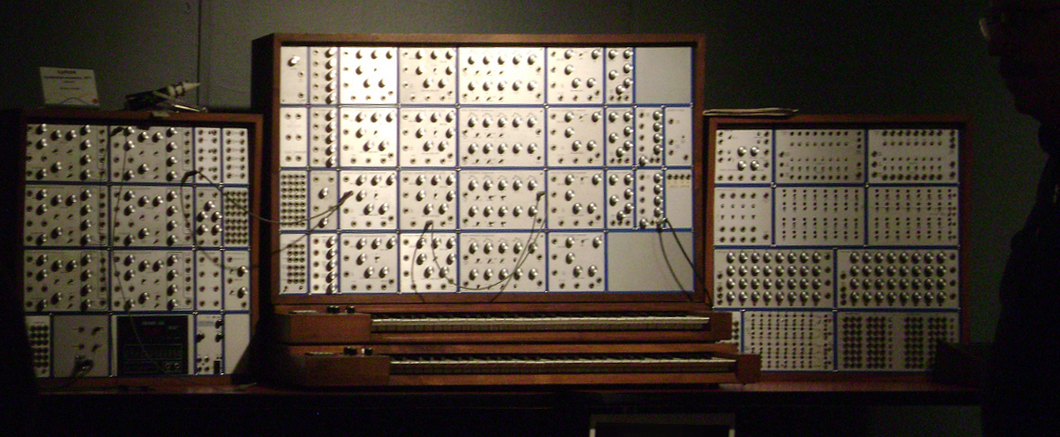
The Oberheim SEM (Synthesizer Expander Module) is a testament to the spirit of modular synthesis. On its own, it seems like a modest device (it was Oberheim’s very first analog synthesizer). The original design plan was for the SEM to be used to thicken up a second analog synth or to be a highly portable backup connected to a sequencer when needed. Very quickly, however, musicians everywhere were able to stack and connect many modules together and create the coveted 8-voice SEM setup that Jan Hammer, Herbie Hancock, and John Carpenter taught us to know and love. The voice SEM was the height of Oberheim’s first synth system, and in the mid seventies it was *very* rare to find a synth system with so many voices available.
The Oberheim SEM (Synthesizer Expander Module) is a testament to the spirit of modular synthesis. On its own, it seems like a modest device (it was Oberheim’s very first analog synthesizer). The original design plan was for the SEM to be used to thicken up a second analog synth or to be a highly portable backup connected to a sequencer when needed. Very quickly, however, musicians everywhere were able to stack and connect many modules together and create the coveted 8-voice SEM setup that Jan Hammer, Herbie Hancock, and John Carpenter taught us to know and love. The voice SEM was the height of Oberheim’s first synth system, and in the mid seventies it was *very* rare to find a synth system with so many voices available.
Eight voice polyphony with 16 VCOs, 16 ADR Envelope generators, and 8 filters was no easy feat during this time period! Programming each SEM individually could be a challenge, but the 8-voice setup included the Polyphonic Synthesizer Programmer, which allowed you to save sixteen patches per voice. Fortunately, UVI’s recreation makes saving your own configurations significantly easier!
The Arp 2500
The Arp 2500 looks like something out of a sci-fi movie, and most people think you’d be equally at home landing a spaceship with it as you would designing cool sounds! This advanced synth had 15 modules that offered VCOs, envelope generators, filters, sample and hold, modulators, sequencers, and more. When purchasing a 2500, you were able to pre-fill all of the rack space with your own customized setup, allowing for a great variety from instrument-to-instrument. ARP eschewed patch cables, a pretty bold step for the time, and utilized a 10x10 switching system to handle the signal routings. There were switches above and below the various modules that allowed you to accomplish the functionality of the patch bay but without having to deal with cables. Programming the 2500 was a labor of love – there were electronic engineering diagrams placed all over the synth and it could definitely intimidate the faint of heart! Jean-Michel Jarre, Jerry Goldsmith, and Vangelis all created some wonderful soundscapes with the 2500.
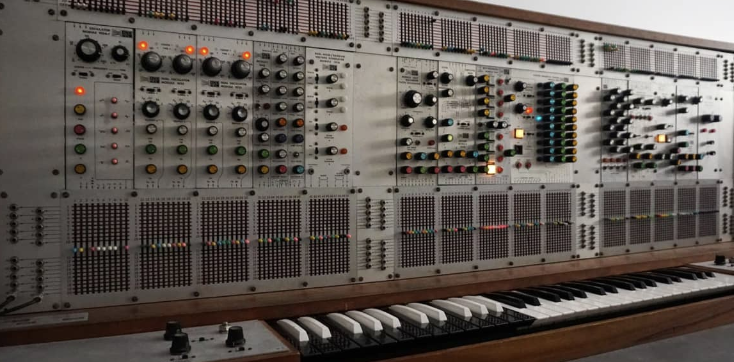
PPG Modular
The 1977 PPG 300 modular was one of the most expensive musical instruments you could buy at the time. Wolfgang Palm began to design the 300 as a replacement for his Moog collection about a year before it was released. These systems are so rare that one sold a few years back in the UK for over $75,000! The Tangerine Dream sound was made possible by Palm’s designs, and the 300 series is most definitely an incredibly rare find. The 300 series was an analog beast that interfaced with a duophonic digital keyboard. Systems were customized to the musician’s requests and included VCOs with 4 wave shapes, VCFs, dual ADSR modules, analog step switches, multipliers, sequencers, sample-and-hold...
Wolfgang Palm would later go on to revolutionize digital synthesis, but his earlier analog offerings were truly ground breaking, and a rare find today!
RSF Modular Model 11
One of the most uncommon of the bunch, the RSF Modular Model 11 is an amazing piece of synth history. Only about 280 of these synth systems were ever produced, and to find a working one now is astonishing. Most models included 3 voltage controlled oscillators working in tandem (the synth was monophonic). The typical LFO, VCF, and VCA sections offered the usual features for editing. The keyboard connected via CV/Gate, which was common for the time. One interesting aspect is the on-board effect system, which included a phaser perfect for designing thick and full sounds. On-board audio inputs allowed you to run external sounds through the filters and modules. This model has been classified as ‘too rare to find’ by many synth enthusiasts, and having access to the sounds in a modern production setup is particularly exciting.
30 modular systems to discover
Multi-Instrument and Sequence Designer





